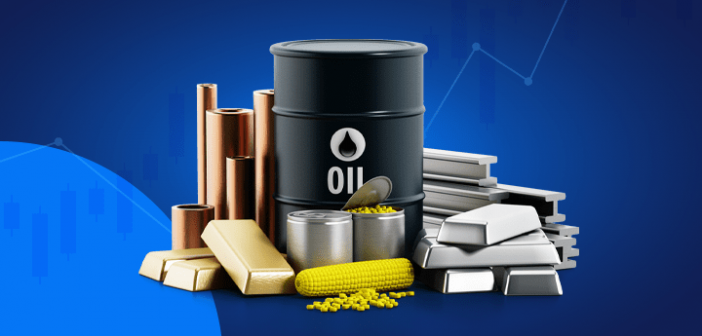The week from August 12 to August 16, 2024, was marked by significant volatility in India’s commodities market, driven by a mix of global geopolitical tensions, fluctuating demand, and supply chain challenges. Key commodities such as gold, crude oil, and agricultural products experienced notable price movements, reflecting the broader uncertainty in global markets.
Gold: A Safe Haven Amid Global Uncertainty
Gold prices surged during the week, driven by a flight to safety as global geopolitical tensions escalated. The yellow metal, traditionally considered a safe haven during times of crisis, saw increased demand. By August 16, gold prices had climbed by nearly 2% compared to the previous week, reaching ₹60,000 per 10 grams. This rise was fueled by concerns over potential military conflicts in Eastern Europe and economic instability in certain emerging markets. The weakening of the Indian Rupee against the US Dollar also contributed to the higher domestic prices, making gold more expensive for Indian buyers.
Crude Oil: Price Fluctuations Amid Supply Concerns
The crude oil market in India was equally turbulent. Early in the week, oil prices rose sharply as reports emerged of supply disruptions in major producing regions, particularly in the Middle East. By mid-week, Brent crude oil was trading at around $88 per barrel, up from $85 the previous week. However, by Friday, prices had begun to stabilize as fears of prolonged disruptions eased, and the market absorbed news of increased production from other regions. The Indian government’s decision to maintain fuel subsidies also played a role in moderating the impact of these price fluctuations on the domestic market.
Agricultural Commodities: Mixed Performance Amid Weather Concerns
India’s agricultural commodities had a mixed week. Monsoon patterns, which are crucial for the Kharif crop, remained erratic, leading to concerns over the yield of crops like rice and pulses. Rice prices saw a modest increase of about 1.5% as traders anticipated lower production due to insufficient rainfall in key growing areas. On the other hand, sugar prices remained stable, supported by strong production forecasts and ample stocks. The government’s ongoing efforts to support farmers through subsidies and minimum support prices helped cushion the impact of adverse weather conditions on the market.
Base Metals: Copper and Aluminum React to Global Demand Shifts
The base metals market, particularly copper and aluminum, experienced a volatile week. Copper prices saw a decline of nearly 3% as fears of a global economic slowdown reduced demand prospects. Industrial activity in key markets such as China showed signs of weakening, which in turn pressured copper prices on the Multi Commodity Exchange (MCX). Aluminum, however, managed to hold steady, supported by strong demand from the domestic automotive and construction sectors, which offset some of the negative global trends.
Energy Commodities: Natural Gas Prices Rise
Natural gas prices in India saw a significant uptick during the week, driven by increased demand from power generators and industries. Prices rose by about 5% on the MCX, reaching ₹220 per MMBtu. The rise was also supported by concerns over future supply constraints due to geopolitical tensions in Europe, which have historically impacted global gas supplies.
Market Outlook: Caution Prevails
Looking ahead, the Indian commodities market is expected to remain volatile. The ongoing geopolitical tensions, particularly in Eastern Europe and the Middle East, are likely to keep investors on edge, driving continued demand for safe-haven assets like gold. Crude oil prices are expected to remain sensitive to any news regarding supply disruptions or changes in production levels by major oil-producing countries. Agricultural commodities will be closely watched as the monsoon season progresses, with any further deviations from normal patterns likely to have a significant impact on prices.
Traders and investors are advised to remain cautious, as the global economic outlook remains uncertain. While there may be opportunities for gains in certain segments, the overall risk environment is high, necessitating careful market analysis and strategy adjustments.
The Indian government’s policies, particularly in managing fuel prices and supporting agriculture, will play a crucial role in shaping the market’s direction in the coming weeks.
Conclusion
The week of August 12 to August 16, 2024, highlighted the interconnectedness of global events and their impact on the Indian commodities market. With gold and crude oil leading the charge amid rising uncertainties, and agricultural commodities responding to domestic weather patterns, the market remains in a delicate balance. Traders and investors will need to stay informed and agile to navigate the challenges ahead.





